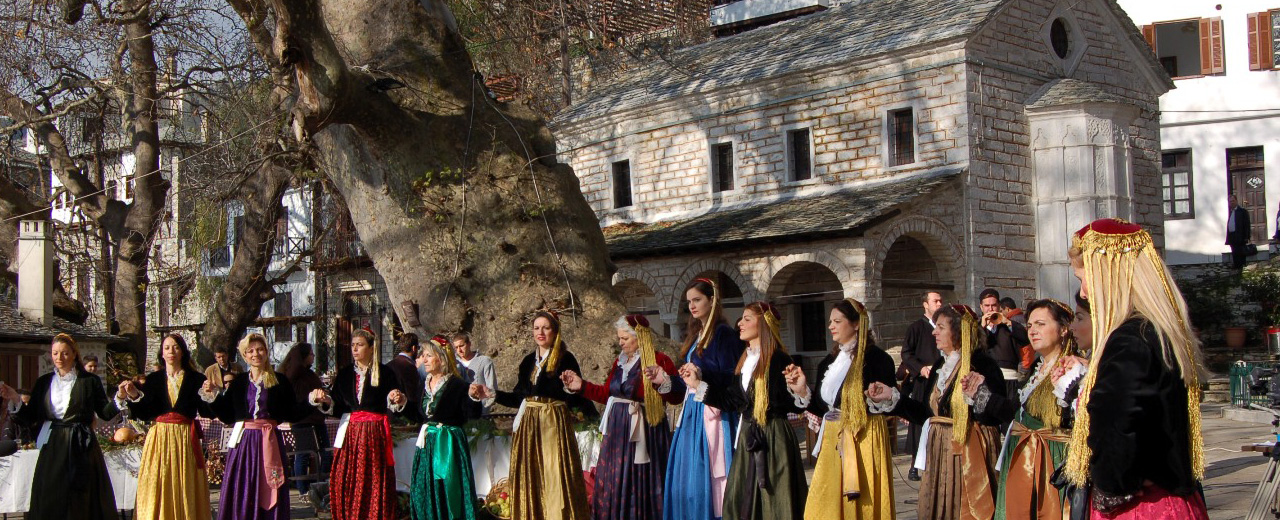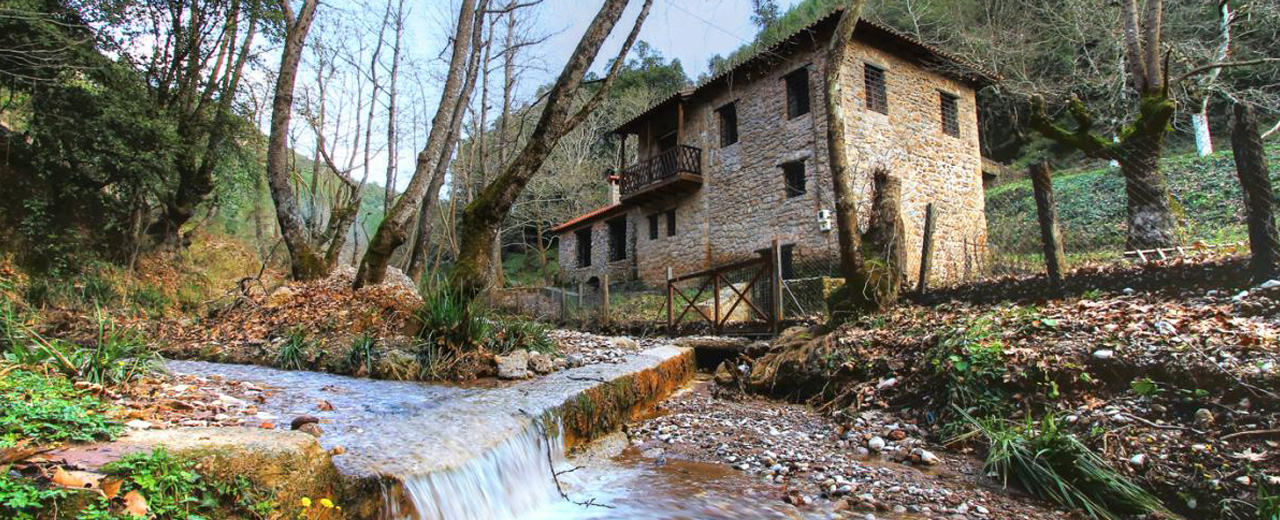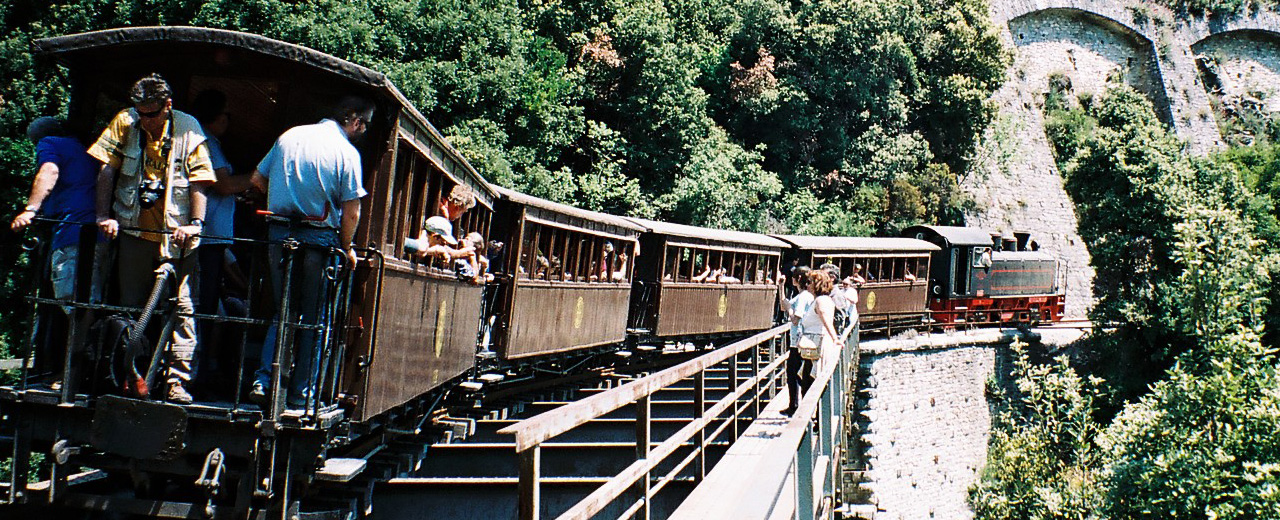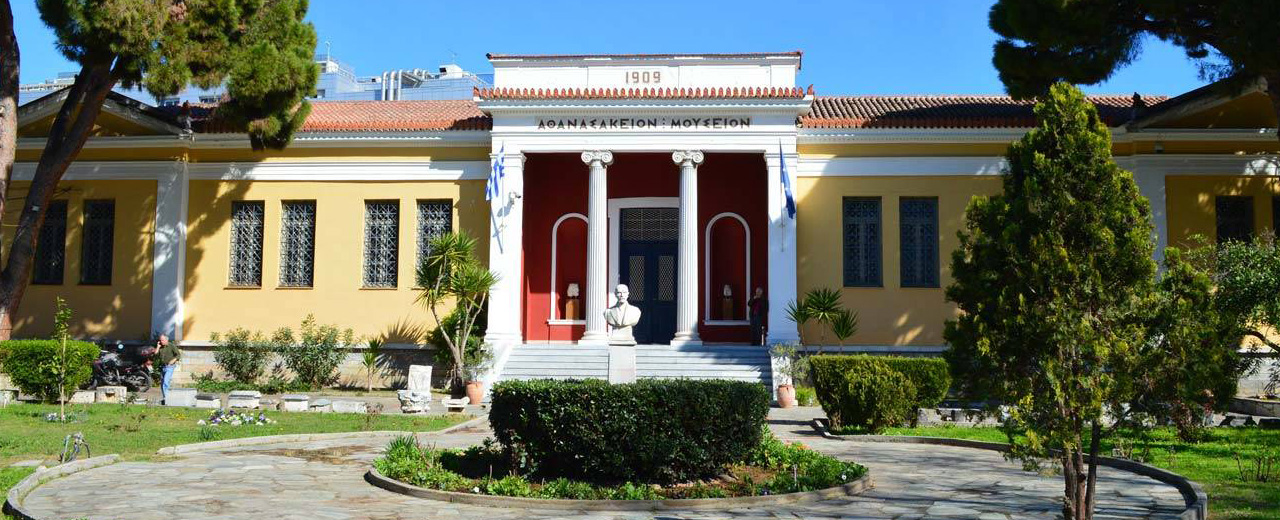If you want to find out more about Volos’ history and worthwhile places to visit you can always count on Volos Taxi drivers. Our drivers have a fountain of knowledge on the city from driving customers around the tourist sites.
We can tailor a route to the sites you want to visit or you can be guided around Volos and its surrounding areas, it is required at least 1 day notice to Volos Taxi Contact Center for availability and cost.
Volos Taxi may provide upon request:
- Bilingual drivers – in English, French, German, Italian or Spanish.
- A professional guide with an additional fee.
You’ll never be short of places to visit in Volos and its surrounding areas, however we thought we would give you a little hand on some of the must see locations.

Portaria is both a winter and summer destination, just 12 km from the city of Volos and 13 km from the ski center of Pelion. It is built at an altitude of 650 meters around the monastery of Panagia Portareas built in the 13th century.
In Portaria visitors can walk the trails and cobbled streets. Walk the path of Centaurs, it is a 3km walk that starts from the church of Agia Marina at the entrance of the village and goes around it passing through beautiful churches, mansions and incredible nature. Visit the magnificent mansions which were once the propriety of Zoulias (now it is the Museum of Folk Art), Athanassakis (it used to be a kindergarten) and Kantartzis There is also the lovely little 19th century three-aisled basilica of Agios Nikolaos which has interesting exterior reliefs on the front.
At the central square, you can see the remains of the hotel “Theoxenia” (1905-1944), which was the most luxurious hotel in the Balkans during the pre-war period and you can taste local delicacies, wine and tsipouro in the taverns and restaurants.

The village of Makrinista is a pure jewel hanging on the side of the amazingly green mountain and offers a breathtaking view all over Volos area due to its location (630m above the sea) and this is why it is known as the balcony of Pelion.
Makrinitsa is also known as the noble village, because it was mostly inhabited by wealthy people. This is why most of the houses in Makrinitsa are noble mansions, very richly decorated. The houses have decorated tall walls and window, work of the folk-artists of the region.
All the climbing streets of Makrinitsa are stone paved and lead to a beautiful large square, shadowed by tall plane trees. The square has cafes, one of the traditional coffee houses is decorated with a fresco by the famous Greek painter Theofilos. There are also a lovely church of St. John the Baptist and a carved marble fountain also known as “Lions”, built around 1809 and whose crystal clear waters are called Immortal Water. The whole place offers tranquility, natural beauty and peace.
In Makrinitsa, you can visit many beautiful churches and Saint Gerasimos monastery built in 1795 which nowadays is a nunnery. As well as the Folklore Museum located in Topali Mansion which has a wonderful collection of objects and mementos related to the folk culture and everyday life of the region.

This particularly beautiful village attracts quite a lot of tourists during summertime for it is built in the middle of a chestnut wood forest, it is extremely agreeable and the view from there is unbelievable.
Tsagarada was founded in 1500 and is composed of four lovely settlements formed around the old restored churches of Taxiarches, Agia Paraskevi, Agia Kyriaki and Agios Stephanos, each one housing wonderful wooden carved iconostasis. Two elements characterize the village of Tsagarada: the large flower garden houses and a huge and imposing one thousand-year-old plane tree located right in the middle of the square of Agia Paraskevi.
In the Aegean side of East Pelion is Milopotamos, one of the most famous beaches. Its exotic characteristics are the golden sand combined with thin white pebbles and the turquoise waters. At the middle of the beach is a big rock that continues through the sea and seems to be splitting the beach into half. The only point that the two sides connect is through a hole in the rock. Worth mentioning that the sea in Milopotamos has earned for years the blue flag award for its clean waters.

Through a verdant side of central Pelion, Milies village combine the beauty of the natural landscape with local architecture, food specific to the area, culture and community. It is within close distance to other important Pelion villages such as Vizitsa and Pinakates, and attracts thousands of visitors every year who come to admire its sights and see the samples of its traditional Pelion architecture.
The area’s trademark is “Moutzouris”, the village train. It was built in the 19th century and connected Milies with Volos, its manufacturer was the Italian engineer Evaristo de Chirico, father of the famous artist Giorgio de Chirico. Two distinguished personalities – a father and son – became associated with the city of Volos: one for leaving behind a railroad and one of the country’s most beautiful railway stations, and the other for a series of masterpieces inspired by Greece that established him as one of the 20th century’s greatest artists.

The history and myths of Pelion on a magical journey,
Pelion train whistles giving the signal of an unforgettable journey. One of the tightest tracks in the world (60 centimeters) hosts “Moutzouris” (as was once called Pelion train) 4 wagons, to indicate the steam and smoke that left in its wake. From Ano Lechonia till Milies route is mountainous, crossing the green slopes with dense vegetation of trees and bushes.
The only stop for the train is just for 15 minutes in Ano Gatzea. Then continues “blowing” and rocking its wagons, for a route of 15 km, in about 90 minutes. Up to the historic village of Milies, magnificent views of nature and architecture with old but elaborate structures of carved marble and gray limestone that shaped arched bridges, arches and tunnels openings. A unique sample is the five-arched stone bridge known as “Kalorema”, in Malaki area.
Approaching Milies the landscape acquires a wild beauty, especially over the large metal bridge of Taxiarchi or De Chirico, by the designer’s name and also father of the great painter. At this point, the train will roll in a curve line, while the bridge is straight.
Milies is the terminal Station. Follow the cobblestone path leading to the center of the village. Traditional guest houses, taverns, the church of the Archangels (built before 1741), the folklore museum and library (one of the oldest in Greece), await visitors for a tour. The most scenic railway line in Greece returns in Ano Lechonia at 3 o’ clock in the afternoon.
Τime schedule-Prices
Train departs at 10:00 from Ano Lechonia and at 15:00 from Milies, with a 15΄ minutes stop in Ano Gatzea, in both directions. Ticket costs 18 € and 10 € per child return and one way 10 € and 6 € per child.

The Archaeological Museum of Volos, also known as Athanasakeion Archaeological Museum of Volos, is a museum located in Volos, Greece, that houses many exquisite finds from early 20th century and modern archaeological excavations in Thessaly.
Exhibits on display include jewelry, household utensils and agricultural tools, originating from the Neolithic settlements of Dimini and Sesklo, as well as clay statuettes and a wide variety of items from the Geometric period, a time of great heroic events, such as the Argonaut Expedition and the Trojan War.
There are also statues and uncommon jointed statuettes from the classical period, rare steles with relief work from the Hellenistic period whereby the color are well-preserved, as well as reliefs from the early Christian and Byzantine periods.
Other fascinating exhibits include tombs transported in their entirety from the archaeological sites where they were discovered, along with the human skeleton and the offerings placed around it. Just outside the museum there are some interesting reconstructions of the Neolithic houses at Dimini and Sesklo.
Our proposal is after this visit to get a tour around the archaeological sites of Dimini and Sesklo.



 Ελληνικά
Ελληνικά